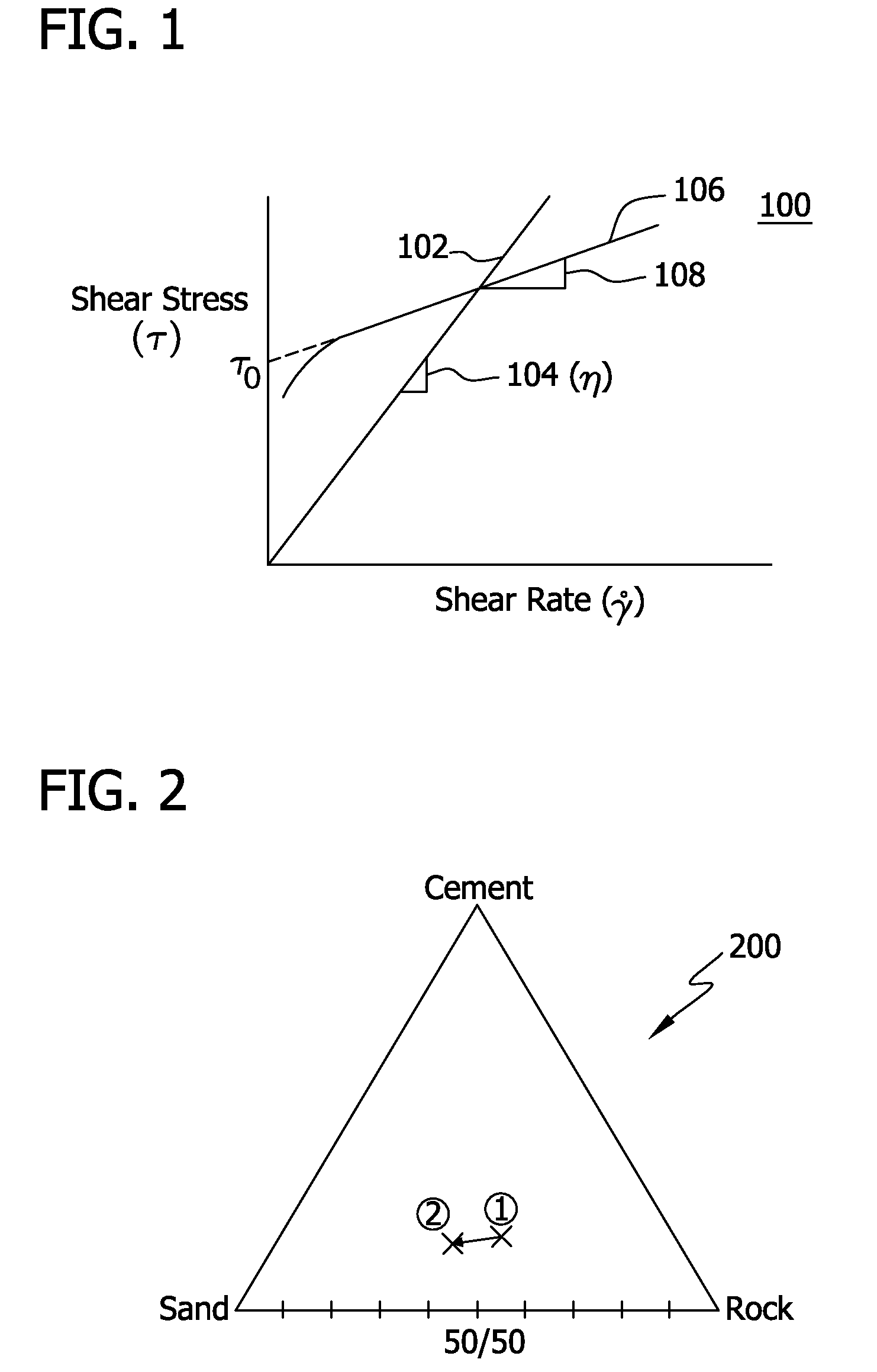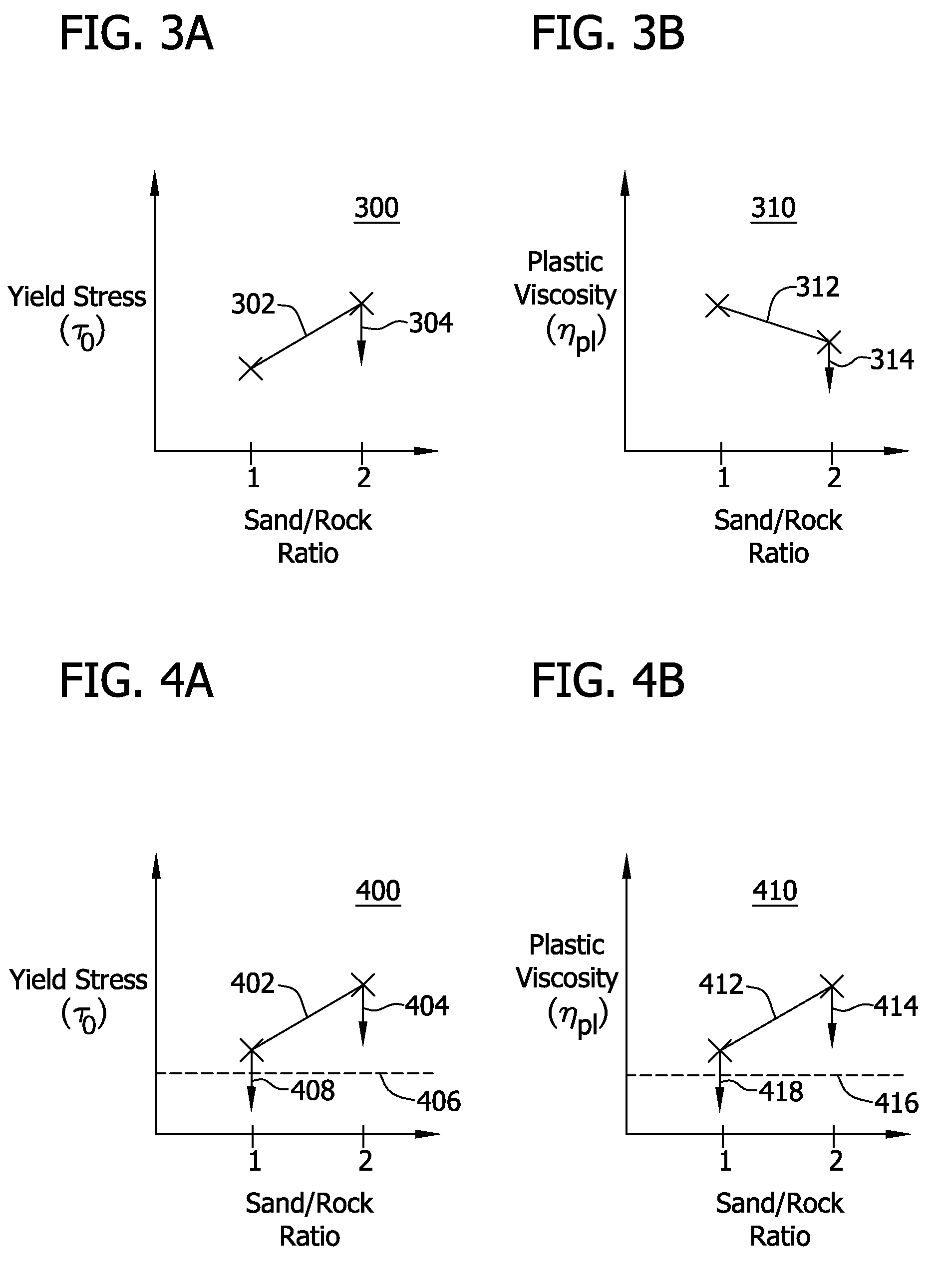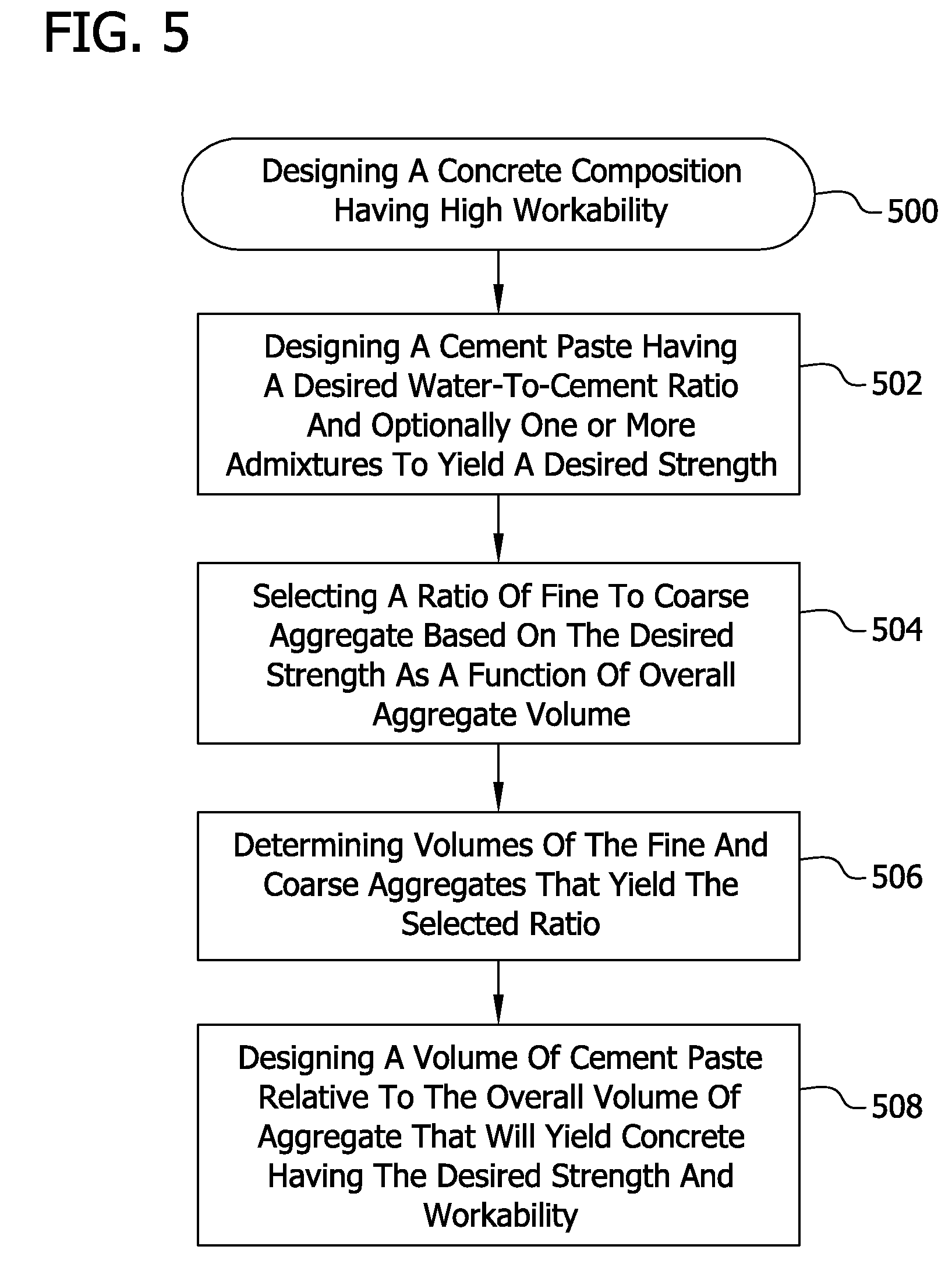Concrete optimized for high workability and high strength to cement ratio
a technology of high strength and cement ratio, applied in the field of concrete compositions, can solve the problems of lack of understanding, inability to understand and account for concrete variability, and poorly optimized and overdesigned concrete produced by concrete manufacturers, and achieves a high degree of workability and minimal segregation and bleeding
- Summary
- Abstract
- Description
- Claims
- Application Information
AI Technical Summary
Benefits of technology
Problems solved by technology
Method used
Image
Examples
example 1
[0112]An optimized concrete composition of the disclosure having a 28-day design compressive strength of 3000 psi and a slump of 5 inches was manufactured according to the following mix design:
Hydraulic cement (Type I)299lbs / yd3Pozzolan (Type C fly ash)90lbs / yd3Fine aggregate (FA-2 sand)1697lbs / yd3Coarse aggregate (CA-il state rock, % inch)1403lbs / yd3Water (potable)269lbs / yd3Air entraining agent (Daravair)1.4fi oz / cwtAir5.5vol. %
[0113]The optimized concrete composition is characterized as having relatively high workability, little or no segregation and bleeding, and a substantially higher strength to cement ratio compared to the concrete compositions of Comparative Examples 1a-1c, set forth below. The materials cost of the optimized concrete composition was determined to be $33.72, based on materials prices existing on Apr. 7, 2006.
example 2
[0117]A concrete composition is manufactured using a modified mix design derived from Example 1, except that the quantities of the various components are increased and / or decreased by an amount of up to 5%. The resulting concrete composition would be expected to be better optimized than each of Comparative Examples 1a-ic but not as well optimized as Example 1.
example 3
[0118]A concrete composition is manufactured using a modified mix design derived from Example i, except that the quantities of the various components are increased and / or decreased by an amount of up to 3%. The resulting concrete composition would be expected to be better optimized than each of Comparative Examples 1a-ic and also Example 2 but not as well optimized as Example 1.
PUM
| Property | Measurement | Unit |
|---|---|---|
| compressive strength | aaaaa | aaaaa |
| water content | aaaaa | aaaaa |
| workability | aaaaa | aaaaa |
Abstract
Description
Claims
Application Information
 Login to View More
Login to View More - R&D
- Intellectual Property
- Life Sciences
- Materials
- Tech Scout
- Unparalleled Data Quality
- Higher Quality Content
- 60% Fewer Hallucinations
Browse by: Latest US Patents, China's latest patents, Technical Efficacy Thesaurus, Application Domain, Technology Topic, Popular Technical Reports.
© 2025 PatSnap. All rights reserved.Legal|Privacy policy|Modern Slavery Act Transparency Statement|Sitemap|About US| Contact US: help@patsnap.com



